It looks like you're using an Ad Blocker.
Please white-list or disable AboveTopSecret.com in your ad-blocking tool.
Thank you.
Some features of ATS will be disabled while you continue to use an ad-blocker.
share:

Greetings:
Not that we would ever say, "we told you so," but ...
6 November 2011
Expert on Fukushima radiation in US: [color=3BB9FF]‘We know its going to impact public health’
• It’s more a matter of something happened that we didn’t want to happen.
•
• We know its going to impact public health.
•
[color=Cyan]• There’s not a whole lot you can do about it.
•
• Once you let the horse out of the barn, hell, the horse took the barn door with it.
•
• We’re stuck, this is an accident that should have been prevented. It’s hard to respond to it.
And now, for something completely different:
Japan TV host diagnosed with acute lymphocytic leukemia —
Had been eating Fukushima produce on show
You just can't make this stuff up folks...
And from April, a supercilious post that really attracted our attention to the apparent ignorance and insensitivity that blocks the sheeple's reality of [color=8AFB17]the true horror of the Fukushima multiple melt-through nuclear disaster/fiasco spewing life-altering radiation 24/7/365 [color=8AFB17]with no end or solution in sight.
[color=Salmon]And so what, the Japanese will have a few babies born limbless or with blotchy skin,
they will adapt to their environment.
You're joking, right?
My wife is Japanese, my in-laws are Japanese, and many of the surviving in-laws did time in Tehachapi and we do not appreciate your attempt at levity or derailment.
If you do not think anything is wrong, you eat the yellow snow and drink the milk.
[color=Salmon]Now just to clear the air, i do not like what is going on over there but we cannot help the situation playing keyboard tag with the mongering of fear.
Speak for yourself.
"Playing keyboard tag," as you call it, just might invigorate enough concerned citizens to get up off their lazy butts, turn off American Idol, Dancing With the Stars and Cupcake Wars and
question authority.
We certainly hope so. We are. OPERATION SURVIVAL is a working title for a project in bloom and a natural outgrowth of our Alliance roots. Stay tuned and you heard it here first.
As you can plainly see, dear reader, there is a lot of (re)education to be done to turn the tide in favor of life.
Meanwhile, the goalposts keep getting moved and acceptable collateral damage limits are steadily increased.
25 August 2011
Japan raising radiation limit to 20 millisieverts/year leads to 160,000 lifetime cancers per million people
In April, the Japanese government raised its maximum limit for children from one to 20 millisieverts per year, a level that leads to 2,270 cancers annually per million people (or 160,000 lifetime cancers per million), according to data in a landmark 2006 U.S. National Academy of Sciences report on radiation cancer risk.
A massive outcry later forced the government to reverse the move.
[color=8AFB17]About a fifth of the 1,600 schools in Fukushima prefecture were exposed to at least 20 milliseiverts of radiation this year, according to a Bloomberg story in July. [...]
The children already have a year's worth of radiation in 4 months at the 20 millisieverts per year!

Operation Survival
(How about the following for starters? (this is a work in progress - any input would be sincerely appreciated...)
We are a grassroots peace and environmental organization dedicated to sharing new ideas and vital information necessary for survival in this post 3/11 age.
We support converting our economy to safely fulfill human needs, creating a cleaner, safer and more humane world while working to make the connections between peace, social justice and environmental responsibility.
We think this foto says it all... these are the real OWS'ers (IMHO) and us 30 years ago at Diablo...they should have left sleeping dogs lie... will you join us?

We are not alone:
Australian Cannonball Nuclear News

tfw[align=center][color=magenta]Liberty & Equality or Revolution[/align]
I'm happy to bring potential good news to this forum, as in, a show of responsibility. Perhaps the industry is more in touch with concerns than we
knew?
hisz.rsoe.hu...
It's listed as a blank on the RSOE disaster scale, and this looks like routine maintenance. Wouldn't it be nice if the 35 mentioned here matched the 35 (or approx. one third) which might not withstand a majour quake?
Related :
finance.yahoo.com...
Factsheets and background on US Nuclear Industry. interesting read!
Nuclear Power in the USA
www.world-nuclear.org...
The Fermi 2 plant in Monroe County is among 35 U.S. nuclear reactors being advised to test their ability to shut down automatically after an earthquake. DTE Energy officials say the Fermi 2 reactor is routinely tested to make sure it's not susceptible to the problem. GE Hitachi Nuclear Energy says the probability of a reactor not shutting properly is very low. DTE spokesman Guy Cerullo says the utility "diligently" performs monthly control rod drive operability tests and quarterly tests in which all control rods are inserted at different times. The Monroe Evening News reports Tuesday DTE says it stays in close contact with GE and other nuclear energy facilities and that safety is its "number one priority."
hisz.rsoe.hu...
It's listed as a blank on the RSOE disaster scale, and this looks like routine maintenance. Wouldn't it be nice if the 35 mentioned here matched the 35 (or approx. one third) which might not withstand a majour quake?
Related :
Shaw is one of the largest maintenance providers to the power and process industries in the U.S., offering full-service plant engineering, reliability, turnaround and outage services with capital construction management and modification support. Shaw provides systemwide maintenance and modification services to 41 of the 104 of operating nuclear power reactors, including the country’s two largest nuclear fleets.
The Shaw Group Inc. (NYSE:SHAW - News) today announced it has renewed a contract with Exelon Generation Company to provide maintenance, modifications and construction services to its fleet of nuclear generating plants. Exelon’s nuclear power fleet includes 17 nuclear reactors in 10 sites; six sites in Illinois, three sites in Pennsylvania and one site in New Jersey.
Shaw began providing fleetwide nuclear maintenance service to Exelon in 2001. During its ten-year relationship, Shaw has assisted Exelon in achieving industry refueling outage records.
finance.yahoo.com...
Factsheets and background on US Nuclear Industry. interesting read!
Nuclear Power in the USA
The USA is the world's largest producer of nuclear power, accounting for more than 30% of worldwide nuclear generation of electricity.
The country's 104 nuclear reactors produced 807 billion kWh in 2010, over 20% of total electrical output.
Following a 30-year period in which few new reactors were built, it is expected that 4-6 new units may come on line by 2020, the first of those resulting from 16 licence applications to build 24 new nuclear reactors made since mid-2007.
However, lower gas prices since 2009 have put the economic viability of some of these projects in doubt.
Government policy changes since the late 1990s have helped pave the way for significant growth in nuclear capacity. Government and industry are working closely on expedited approval for construction and new plant designs.
In 2009, the USA generated 3950 billion kWh net of electricity, 45% of it from coal-fired plant, 24% from gas and 7% from hydro. Annual electricity demand is projected to increase to 5,000 billion kWh in 2030, though in the short term it is depressed and is not expected to recover to the 2007 level until about 2015. Annual per capita electricity consumption is currently around 12,400 kWh. Total capacity is 1025 GWe, less than one tenth of which is nuclear.
The USA has 104 nuclear power reactors in 31 states, operated by 30 different power companies. In 2009 these plants achieved a capacity factor of 91.1%, generating 799 billion kWh and accounting for 20% of total electricity generated. In 2010, 807 billion kWh was generated by nuclear plant.
(more)
www.world-nuclear.org...
reply to post by thorfourwinds


Peace Love Light
tfw
[align=center][color=magenta]Liberty & Equality or Revolution[/align]


Peace Love Light
tfw
[align=center][color=magenta]Liberty & Equality or Revolution[/align]
reply to post by Northwarden

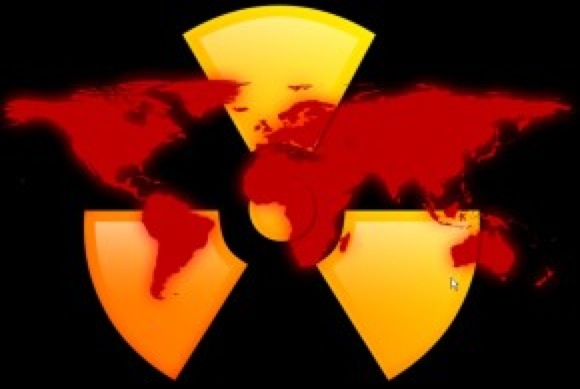
[color=Cyan]The total number of days between Friday, March 11, 2011 and Friday, December 23, 2011 is 287 days.
[color=Chartreuse]The radiation poisoning of we, the people, our children, pets, food, water and our land
has continued unabated - 24/7/365
- for 9 months, 12 days ... which is:
• 24,796,800 seconds
• 413,280 minutes
• 6,888 hours
• 41 weeks
One again, are we any closer to a solution to the Fukushima multiple melt-throughs disaster/fiasco spewing life-altering clouds of radiation 24/7/365
And now for something completely different:
19 December 2011
Hosono Says Fukushima Plant Is in ‘Equivalent of Cold Shutdown'
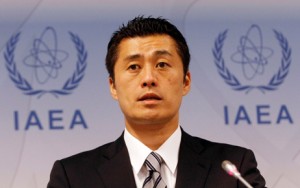 Goshi Hosono
Goshi Hosono
Speechless.
Cold shutdown doesn't apply to melted reactors.
In-your-face NUKESPEAK!
There is no way to peaceably win this war when the opponents keep moving the goalposts and changing the rules of the game in mid-play.
Feeling somewhat frustrated and helpless, we wonder what do we do now?
How to channel all this pent-up frustration and intense energy?
Perhaps we go to the “end,” the radioactive waste?
Beginning premise:
Creating additional radioactive waste on a daily basis with no solution in sight is foolhardy at best.
Such myopia should be called what it REALLY is: Criminal Negligence.
In 1987 Congress designated Yucca Mountain as the future repository for all nuclear waste in this country. Yucca Mountain is inside a government nuclear test site in the Nevada desert.
So far, over $9 billion has been spent constructing an intricate maze of underground tunnels and chambers designed to house nuclear waste safely for at least a million years.
Yucca Mountain has been designed as a specialized storage center to keep nuclear waste safely contained in an underground facility deep inside a mountain, long after the material is believed safe and no longer radioactive.
The storage center is on a military base almost one hundred miles from civilization (and that's Las Vegas, for what it's worth), in the middle of the Nevada desert.
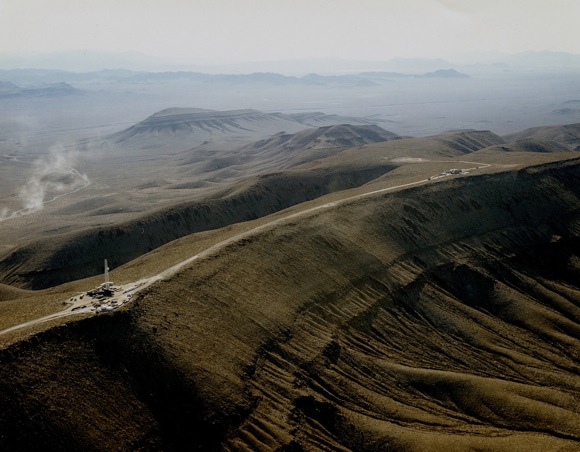
Due in part to its complexity, the site wasn’t expected to receive any nuclear waste until 2020. Currently, all such waste is being stored in temporary facilities.
One more thing…Yucca Mountain is the only long term nuclear waste site this country has.
How temporary is temporary?
But Yucca Mountain is not going to be the long term nuclear waste site!
[color=Chartreuse]FULL STOP!
The radioactive waste musical chairs game has ended - the music has stopped - and the waste is where it is for the foreseeable future.
What part of this fiasco is difficult to understand?
One might wonder where all that nuclear waste is today, and is it stable enough to reside where it is for perhaps decades - or eternity?
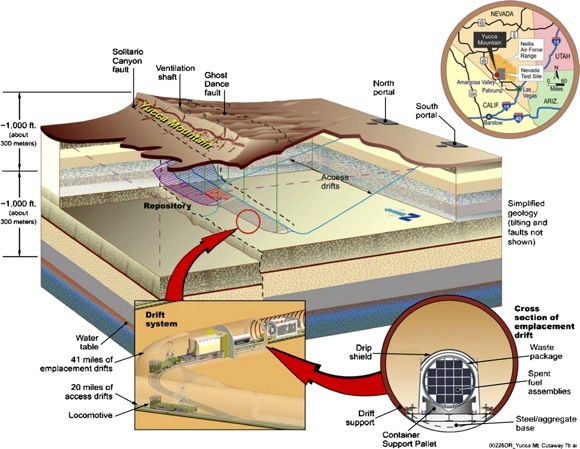
To be continued ...

RADIATION WATCH 2011

[color=Cyan]The total number of days between Friday, March 11, 2011 and Friday, December 23, 2011 is 287 days.
[color=Chartreuse]The radiation poisoning of we, the people, our children, pets, food, water and our land
has continued unabated - 24/7/365
- for 9 months, 12 days ... which is:
• 24,796,800 seconds
• 413,280 minutes
• 6,888 hours
• 41 weeks
One again, are we any closer to a solution to the Fukushima multiple melt-throughs disaster/fiasco spewing life-altering clouds of radiation 24/7/365
And now for something completely different:
19 December 2011
Hosono Says Fukushima Plant Is in ‘Equivalent of Cold Shutdown'

Tokyo Electric Power Co.'s crippled reactors in Fukushima are in a state “equivalent to cold shutdown” even though the definition would be different in the case of an undamaged plant, Goshi Hosono, the minister in charge of responding to the disaster, said today.
‘[color=Cyan]We understand that there is a difference between the cold shutdown state for a normal nuclear reactor and the state of cold shutdown that we have achieved at Fukushima Dai-Ichi,’ Hosono told reporters in Tokyo.
[color=Chartreuse]'The goal is to have nuclear fuel where it is kept in a cold state and to ensure that radioactive materials are not emitted. That is the whole point of the cooling system that we have in place.'
Speechless.
Cold shutdown doesn't apply to melted reactors.
In-your-face NUKESPEAK!
There is no way to peaceably win this war when the opponents keep moving the goalposts and changing the rules of the game in mid-play.
Feeling somewhat frustrated and helpless, we wonder what do we do now?
How to channel all this pent-up frustration and intense energy?
Perhaps we go to the “end,” the radioactive waste?
Beginning premise:
Creating additional radioactive waste on a daily basis with no solution in sight is foolhardy at best.
Such myopia should be called what it REALLY is: Criminal Negligence.
In 1987 Congress designated Yucca Mountain as the future repository for all nuclear waste in this country. Yucca Mountain is inside a government nuclear test site in the Nevada desert.
So far, over $9 billion has been spent constructing an intricate maze of underground tunnels and chambers designed to house nuclear waste safely for at least a million years.
Yucca Mountain has been designed as a specialized storage center to keep nuclear waste safely contained in an underground facility deep inside a mountain, long after the material is believed safe and no longer radioactive.
The storage center is on a military base almost one hundred miles from civilization (and that's Las Vegas, for what it's worth), in the middle of the Nevada desert.

Due in part to its complexity, the site wasn’t expected to receive any nuclear waste until 2020. Currently, all such waste is being stored in temporary facilities.
One more thing…Yucca Mountain is the only long term nuclear waste site this country has.
How temporary is temporary?
But Yucca Mountain is not going to be the long term nuclear waste site!
[color=Chartreuse]FULL STOP!
The radioactive waste musical chairs game has ended - the music has stopped - and the waste is where it is for the foreseeable future.
What part of this fiasco is difficult to understand?
One might wonder where all that nuclear waste is today, and is it stable enough to reside where it is for perhaps decades - or eternity?
Closing Yucca Mountain will leave 130,000 metric tons of nuclear waste stranded at 131 different sites spread across 39 states. The federal government will be at risk of breach-of-contract lawsuits for breaking agreements with utility companies.
Some estimates indicate the potential for the Obama DOE could incur more than 50 billion dollars of legal liability in the case.

"You can do all the recycling in the world, but you are still going to be left with a residue that has to be stored somewhere, preferably underground. You’ve got this residue. Where are you going to put it?"
Mitch Singer, a spokesperson for the nuclear energy industry.
To be continued ...
edit on 27/12/2011 by thorfourwinds because: color

(continued from previous post)
According to an article on CNN.com, "Currently, 70,000 tons of radioactive waste are stored at more than 100 nuclear sites around the country, and 2,000 tons are added every year."
How is all this stuff being stored today?
Expended nuclear waste is typically kept in special canisters stored above ground and constructed of concrete, steel, and lead at the reactor's plants, which generate them as a temporary solution.
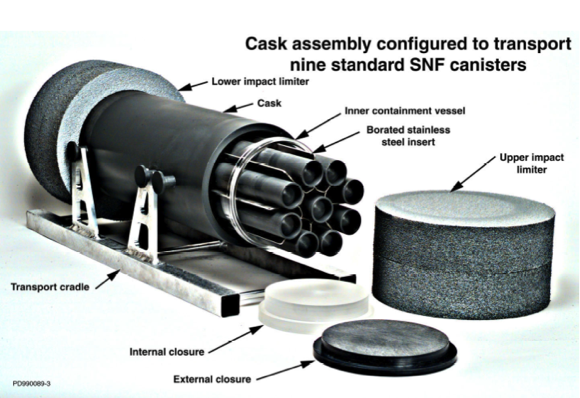
[color=Cyan]The Nuclear Regulatory Commission has certified the expected lifespan of these containers to be ninety years, though how that number was determined is unclear.
Nuclear energy didn't exist ninety years ago, and therefore nuclear waste hasn't been kept in one of these containers for ninety years to test the theory.
Question:
Why would Obama close the only viable answer to long-term storage of nuclear waste while he simultaneously calls for additional nuclear power plants?
Nuclear waste piling up faster than solutions can be dreamed
In 1987, Washington unilaterally decided the waste was going to Yucca without seriously considering other potential sites. Not surprisingly, Nevada citizens have railed against the top-down plan ever since.
If the government doesn’t bow to pressure and reverse its decision, US nuclear waste planners will be going back to the drawing board for what promises to be another very prolonged and expensive exercise.
So, what’s the real deal?
The root reason the waste problem isn't solved is technical. Since radioactive emissions are strong enough to destroy ANY container, the "technical" problem will NEVER be solved.
New alloys, new crystal structures, microbes that eat radioactive waste, vitrification -- all worthless. Rocketing the waste into space, subduction zones in the sea, deep holes -- won't work either.
And, it seems that nobody wants the stuff in their back yard.
On December 20, 2011, The First Nations of the North Shore Tribal Council strongly rejected the prospect of the North Shore of Lake Huron becoming a site for the long-term storage of nuclear waste for the Nuclear Waste Management Organization (NWMO).
Elliot Lake has a long history of uranium mining that resulted in the boom and bust of the city, as well as significant and lasting environmental damage to the local watershed and nearby ceremonial grounds.
“We cannot idly stand by and watch as they inject Mother Earth with this cancer,” says Chief Lyle Sayers, chairman of the North Shore Tribal Council. “We must ensure that the future natural resources of this area are there for our children, generations to come, and businesses alike.”
The half-life of this material is hundreds of thousands of years old and could impact generation after generation.
No site can ever be totally safe for nuclear waste storage.
Let’s follow the money.
In 1982, the Congress passed the Nuclear Waste Policy Act, which required the Department of Energy to safely and permanently dispose of spent nuclear fuel no later than January 1998.
The Act also created the Nuclear Waste Trust Fund, which required ratepayers, through their electricity bills, to pay for the safe transportation and disposal of spent nuclear fuel.
Almost 30 years ago, Uncle Sam entered into a contract with utilities to dispose of their nuclear waste beginning in 1998. That disposal was supposed to happen at Yucca Mountain. Under the law, all nuclear facilities were required to pay an annual fee to the nuclear waste trust fund to cover the cost of Yucca Mountain.
When the federal government missed the 1998 deadline, utilities sued the government to recover their costs incurred in storing the waste. So far, according to federal officials, it will cost the government some $16.2 billion to pay the legal judgments entered against the government…[color=FDD017]assuming there will be a completed federal disposal site by 2020.
There is a small problem, though…the $25 billion fund does not exist.
To be continued ...
edit on 27/12/2011 by thorfourwinds because: color

(continued from previous post)
There is a small problem, though…the $25 billion fund does not exist.
All of the fees collected in excess of the costs of building the Yucca Mountain facility,
instead of being placed in a trust fund, were simply spent by the government as quickly as
they were received.
As a result, a group of state regulators and the Nuclear Energy Institute, a trade organization, are suing the Department of Energy, seeking to suspend collection of the annual fees utilities pay into the waste fund. "There’s no sense paying a fee if you are not getting a program for it," said NEI’s Steven Kraft...
One might extrapolate that idea and think,"There's no sense paying a fee if you are not getting what was promised from it..."
One might ask if we ever get our money back - or a credit on our power bill - when these nukes are not built.
Check this out:
Does your power bill have this "Nuclear Construction Cost Recovery" fee and is it the same 5.8619% of base bill calculations?
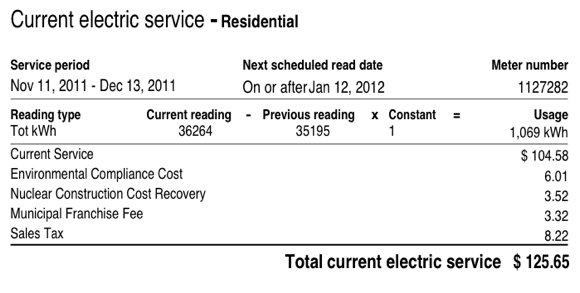
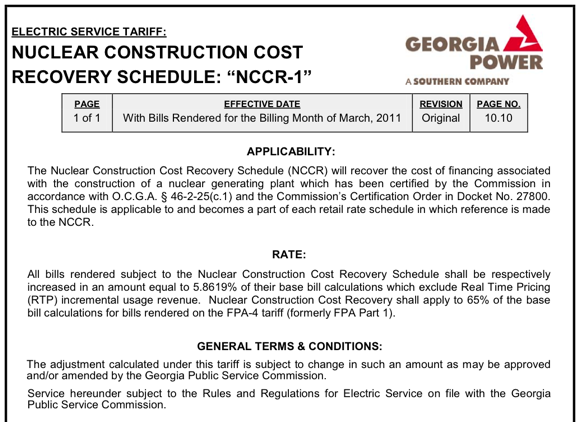
The nuke folks have a sweet deal: the customers pay the construction costs up-front and the USGOV/DOE (theoretically) is responsible for long term storage of this hideous radioactive waste.
April Fool's - the utilities are now stuck with what they already have on site and what they generate on a daily basis.
Do you have one of these de facto long term storage facilities in your back yard?
Locations of Spent Nuclear Fuel and High-Level Radioactive Waste Destined for Geologic Disposal
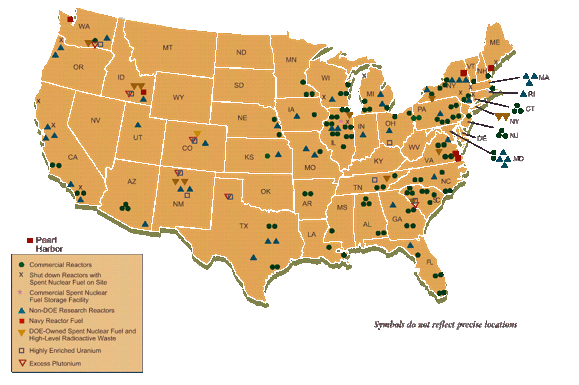
And this:
U.S. Nuclear Manufacturing and/or Waste Sites
These are sites where nuclear materials have been manufactured and/or where waste has been stored, and where massive leaks, toxic emissions, or unexplained losses have occurred in the processing of nuclear and other toxic materials. Listed with the site is the type of toxic or radioactive leak or "loss."
Oak Ridge, TN - mercury, other heavy metals, nuclear (uranium, waste), dioxin
Barnwell, SC - nuclear (waste)
Hanford, Richland, WA - nuclear (plutonium, waste)
Rocky Flats, Colorado - nuclear (plutonium)
Idaho Falls, ID - nuclear (plutonium)
Pantex, TX - nuclear (tritium)
Maxey Flats, KY - nuclear (waste)
West Valley, NY - nuclear (waste)
Nuclear Metals, Concord, MA - nuclear (uranium)
Kerr-McGee, Cimarron, OK - nuclear (plutonium)
The Oak Ridge and Hanford facilities stand out among them as being among the largest leaks of toxic and/or radioactive waste in the world. At Oak Ridge, literally millions of pounds of mercury have leaked into the ground, the aquifer, and a streambed that then winds many miles through the Tennesee countryside and through several towns...
To be continued ...

(continued from previous post)
Meanwhile, back at the ranch:
Every day, there is more waste, more radioactive pollution, such as tritium, which is killing our citizens, and more of the "ignoble seven" whose daughter products include noble gases, which are freely released by nuclear power plants in copious quantities.
The "ignoble seven" are: Technetium-99, Tin-126, Selenium-79, Zirconium-93, Cesium-135, Palladium-107, and Iodine-129.
All have half-lives > 200,000 years.
Someone seems to have missed the elephant in the room.
All nuclear power plants need to be closed NOW.
[color=Chartreuse]They are old, corroded, embrittled, dilapidated and their employees have repeatedly abdicated their responsibilities - from proper training, to doing their fire rounds, to numerous problems with top management, to not giving a damn about [color=Chartreuse]possible irreversible catastrophe only ONE accident away, and so on.
Every day the plants run, they increase the total risk, the total cost, the immediate risk, and the immediate cost -- costs in terms of health effects around the plants, and delayed costs from accidents or just from fuel storage.
Even if we stop making nuclear waste, every movement of the fuel entails enormous risk. And there will be tens of thousands of shipments from all around the country.
source
source
But what, when, how and where?
Scientists don't know.
Each trip is a terrorist's best friend and a sane person's worst nightmare.
When the music stopped, radioactive waste appears to be where it will stay for the foreseeable future.
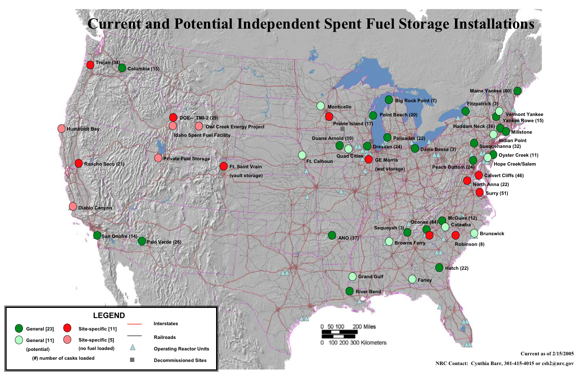
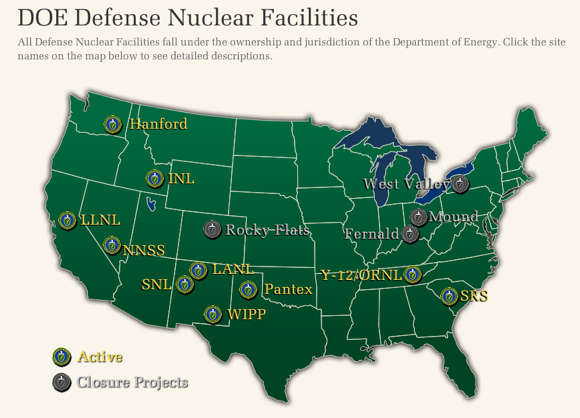
Let us go back in history a couple of years in an attempt to understand this nuclear waste shell game.
19 May 2009
Billions in tax dollars found buried in Nevada Cave
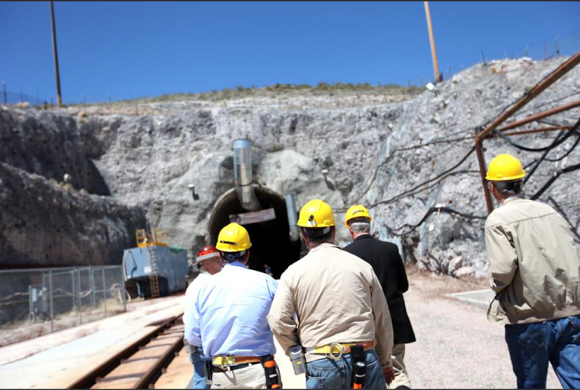
If you think anyone in Washington gives a damn about your money, listen to how they have wasted it, and will continue to waste it, because of "politics."
Taxpayers have spent more than $10 billion dollars digging a hole in a mountain in Nevada where the nation's nuclear waste was supposed to go.
The Yucca Mountain project has been underway for nearly three decades.
In 1987, Congress even passed a law explicitly directing waste from the nation's nuclear power plants would start arriving in Yucca Mountain in by the late 1990's.
So far, not one single radioactive isotope has made its way to Yucca, and probably never will.
President Obama, making good on a promise to Senate Majority Leader (and not-in-my-backyard-of-Nevada) Harry Reid, has effectively killed any future for the Yucca Mountain facility. More than $10 billion dollars of scientific study, engineering and congressional spending has just been thrown into a hole in the ground.
But Yucca Mountain is not officially dead, and here is where the real arrogance of wasting your money comes in.
Even the President cannot kill the project because, remember, the project is law.
According to the federal government, the government is required to build Yucca Mountain and accept the waste.
Senator Harry Reid (D-NV) would like to change that law, but without an option for where all this waste will go, it may be hard to get the votes.
So what to do?
Keep Yucca Mountain on life-support while you spend money looking for another alternative. President Obama plans to do just that by spending $197 million dollars in the 2010 budget, essentially to pay people to do nothing.
Out at Yucca Mountain, there will be a staff getting paid, proceeding with licensing and other odds and ends, [color=Cyan]knowing all along that the project has no future.
It's pure politics that has already cost you and me $10 billion dollars and now $197 million more.
Let's hope they don't carve out more of Yucca Mountain to stuff with dollar bills.
To be continued...

(continued from previous post)
... 41 weeks ago ...
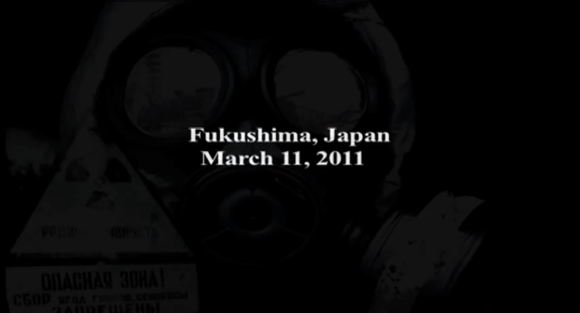
And this from only a week before the world changed.
3 March 2011
As U.S. Moves Ahead with Nuclear Power, No Solution for Radioactive Waste
President Obama has won wide bipartisan support for his determination to revive American nuclear power — a low-carbon energy solution that electric utilities and conservatives can support.
But a pair of legal actions last month could complicate matters for Washington by forcing the Nuclear Regulatory Commission (NRC) to address [color=Cyan]a longstanding and almost intractable problem: How and where to store the highly radioactive waste.
For many, the separate suits by state attorneys general and environmental groups raise fresh questions over why America is pouring billions into a nuclear renaissance with [color=FDD017]no long-term strategy for handling waste from the nation's existing facilities.
[color=Chartreuse]The waste problem is the Achilles heel of the nuclear industry,’ said Daniel Hirsch, president of the Committee to Bridge the Gap, a California-based nuclear watchdog...
In December 2010, NRC changed the rule, doubling the amount of time that waste can be stored on-site from 30 years after a plant goes out of service to 60 years. Now, it appears the agency might double that again.
In an interview with SolveClimate News, NRC spokesperson Neil Sheehan said [color=Cyan]a plan was underway to allow the high-level waste to be stored on-site for over 120 years...
At Indian Point, one of the oldest reactors in the country, 30 tons of enriched uranium radioactive waste is produced every 18 months, most of which is crammed into 40-foot deep pools at each of the two reactors.
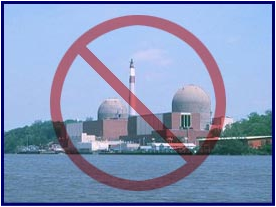
Notable Quotes
"The Nuclear Regulatory Commission has ranked Indian Point ‘in terms of potential human consequences as the No. 1 site in the nation."
-- Robert Stephan, Homeland Security's Assistant Secretary for Infrastructure Protection reported in the Journal News, March 23, 2006
Indian Point is "one of the most inappropriate sites in existence" for a nuclear plant.
--Robert Ryan, Nuclear Regulatory Commission staff member in 1979
Back to Indian Point:
Currently, each pool holds about 1,000 tons of radioactive waste. An additional 1,500 tons are stored in 15 dry casks on an open tarmac surrounded by barbed wire and a surveillance tower.
Remember that number: 100 tons per dry cask.
Across the country, 50,000 metric tons of waste was produced through the end of 2003, according to a 2005 report by the National Research Council. The nonprofit Union of Concerned Scientists predicts that by 2015 there will be over 75,000 metric tons of radioactive waste stored at temporary sites.
Indian Point will close in 2035, if it gets relicensed. Under the new waste storage rule, [color=Cyan]spent fuel would be stored there until 2095, and could remain on-site well into the 22nd century if the rule extends to 120 years.
And yet, the beat goes on...
22 December 2011
Nuke regulators bless reactor design amid Capitol Hill cheers, jeers
The Nuclear Regulatory Commission on Thursday approved the amended design for the Westinghouse AP1000, a reactor that several power companies intend to use for building the first new US nuclear plants in decades.
More Nukespeak, blah, blah, blah...
“The design provides enhanced safety margins through use of simplified, inherent, passive, or other innovative safety and security functions, and also has been assessed to ensure it could withstand damage from an aircraft impact without significant release of radioactive materials,” NRC Chairman Gregory Jaczko said in a statement.
... “significant release of radioactive materials.”
Is there a number attached to significant?
Is that like being a little bit pregnant?
What does that number equate to in "collateral damage" - human lives?
To be continued...
edit on 27/12/2011 by thorfourwinds because: color

(continued from previous post)
Utility giant Southern Co. is using the AP1000 for its project to build two new reactors at its Vogtle site in Georgia.
"This is another key milestone for the Vogtle project and the nation's nuclear renaissance,” said Southern Co. CEO Thomas A. Fanning. The Southern Co. project that has won a [color=Cyan]conditional $8.3 billion Energy Department loan guarantee but still awaits a final NRC license...
One might offer that if insurance and satisfactory waste disposal matters were a prerequisite to licensing, there would not be any more nuclear power plants built in America.
And on the day before the world changed:

10 March 2011
Double attack on US nuclear waste fees
(...) Funding for Yucca Mountain has come from a levy of 0.1 cents per kWh of nuclear power, which currently adds up to about $770 million per year. Nuclear utilities - and therefore their customers - have now paid a total of over $31 billion into the Nuclear Waste Fund.
The government was supposed to use this money to create a permanent nuclear waste disposal site by 1998.
Around $7 billion was spent and much progress made, but Yucca was cut off from funding in May 2009 by President Barack Obama and energy secretary Stephen Chu.
But, that was then and this is now.
Where, oh where is the waste going now? Is any of it being trucked around the country to a location different from the nuclear facility where the waste was generated? Ya think?
Having submitted an 8600-page application to build Yucca Mountain under President George Bush and his energy secretary Sam Bodman, the DOE under direction from Chu and Obama moved to withdraw it in May. Spending on Yucca is now set at the absolute minimum level, while the [color=Cyan]$24 billion balance of the fund remains with the US Treasury earning substantial compound interest of over $1 billion per year.
Let's see...that's a couple billion more...so there should be about $26 billion available.
How does one actually verify that this is a correct and true amount and where is the entry on the ledger?
Is it really there?
If not, would not that be something to investigate, identify the perpetrators and persecute, errrrr, prosecute, to the fullest extent of the law?
Here is where Obama made sure the process is still in process with no real movement regarding the safe disposal of radioactive waste.
Why are the power companies allowed to utilize this "to cheap to meter" power source?
This, however, was rejected by the Nuclear Regulatory Commission's independent Atomic Safety and Licensing Board (ASLB). The DoE had no right to substitute its own ideas in place of those legislated by Congress, said the ASLB, and is bound by law to complete its work at Yucca Mountain unless Congress acts to supercede the previous legislation.
"Completing the work" at Yucca Mountain means exactly what?
Does that imply that the money is conveniently tied up by legalize and not available to whatever entity is charged with the work?
In the meantime, Obama has created a 'Blue Ribbon' commission on radioactive waste management. It is hearing evidence from a range of stakeholders on waste management methods including reprocessing, recycling and the use of burner reactors as well as the widely accepted geologic disposal method as proposed for Yucca Mountain.
What the hell have they been doing for the past 50 years if not investigating the above?
And this bit of DoubleSpeak from Energy Secretary Steven “Nukee” Chu yesterday:
Chu calls reactor design approval ‘important milestone’
Energy Secretary Steven Chu is happy that the Nuclear Regulatory Commission has approved Westinghouse’s AP1000 nuclear reactor design, which is slated for use at an Energy Department-backed nuclear power plant in Georgia.
Chu’s praise for the design approval underscores [color=Cyan]Obama administration support for new nuclear power plants, a position at odds with some environmental groups.
[color=Chartreuse]‘The Administration and the Energy Department are committed to restarting America’s nuclear industry...” Chu said in a statement Thursday.
The game is on.
What say you?
Live Radiation Monitor - Santa Monica, CA

Peace Love Light
tfw
[align=center][color=magenta]Liberty & Equality or Revolution[/align]

RADIATION WATCH 2011

[color=Cyan]The total number of days between Friday, March 11, 2011 and Saturday, December 31, 2011 is 295 days.
[color=FDD017]The radiation poisoning of we, the people, our children, pets, food, water and our land
has continued unabated - 24/7/365
[color=Chartreuse]
- for 8 months, 29 days ... which is:
• 25,488,000 seconds
• 424,800 minutes
• 7,080 hours
• 42 weeks (rounded down)
One again, are we any closer to a solution to the Fukushima multiple melt-throughs disaster/fiasco spewing life-altering clouds of radiation 24/7/365


Peace Love Light
tfw
[align=center][color=magenta]Liberty & Equality or Revolution[/align]
reply to post by muzzleflash

Greetings my friend:
We need to keep the horror of this environmental warfare nuclear holocaust on the front page of we, the people's, minds and thoughts in a positive, pro-active way, so as to be a beacon of light in the dark night of a potential nuclear winter, as [color=Cyan]positive thoughts create positive reality.

We certainly do not need any more distractions to further pollute our understanding of manifesting reality. We lightworkers have much to do, and as usual, you are on the front line with your incisive observations.
We salute you and wish you complete safety Godspeed.
On our side of the hill, we have been keeping the Bat Signal lit since 3/11- [color=Chartreuse]Nukushima Day 1, contending that what prevails here in America is a well-organized camouflage, a criminal act, actually, orchestrated by the very same people to whom we entrusted the power to uphold the law, and - by extension, our values - and who are paid to protect US: we, the people.
That’s their damn, strike that, sworn duty!!
Ethics, integrity, responsibility, anyone?
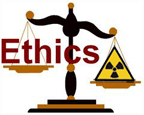
The public health radiation-induced quandry in the United States evidenced by infant mortality rates skyrocketing, the contamination of all open water, agricultural land and the entire food chain, not to mention the broader economic and social implications, has neither been fully acknowledged nor addressed in a comprehensive and meaningful fashion by the very authorities we elected and pay mightily for... for what, pray tell?
This is an undeclared nuclear war perpetrated on the peoples of Earth by an uncaring conspiracy comprised of the JAPGOV/TEPCO, the EPA/FDA/USGOV and the MSM worldwide. We have dealt with war before, and we'll treat this attack on we, the people, as such and respond accordingly, albeit with 40 years more knowledge and ammunition plus newly-freed pent-up frustrations of feeling betrayed by those we trust... we do not forget.
America as a nation state is on the Eve of Destruction, teetering on the brink of a precipice that is surely a fatal fall if we were to plunge into the abyss. Our once-fertile, abundant lands and inland, once-pristine waters are now nuclear fallout contaminated - for how long, no one seems to be sure - hundreds, perhaps thousands of years. The balloon has dropped people, and it's called Nukushima.
Too many parts of our country are already uninhabitable forever, plagued by the broken promises of multiple lackey government agencies and nuclear-friendly-and-paid-for administrations that continued to kick the nuclear radioactive waste can down to road and these once-temporary on-site spent fuel pools and dry canister storage have now become the final resting place for this nightmare abomination that is radioactive - for all intents and purposes - FOREVER.
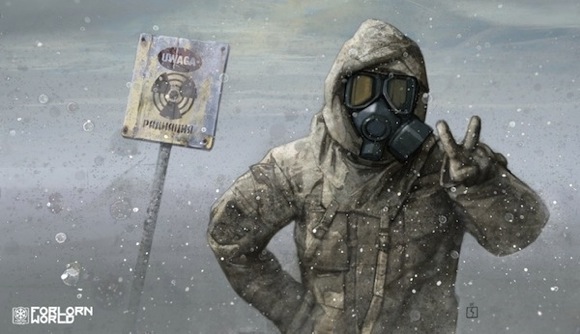
In this light, we are pleased to share a few non-radioactive nuggets to your fine effort.
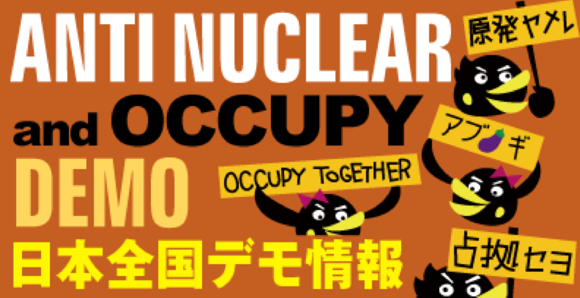
These are some "fishing" Tweets:
Occupy+Anti-Nuclear Collective = Force to be reckoned with. TEPCO/JAPGOV blink
as radiation cover-up further exposed. DENY IGNORANCE
www.abovetopsecret.com...
RADIATION WATCH 2012+RadWaste in Kyrgyzstan+StarryBrooke intense Yokohama
anti-nuclear rally pics, Passion Personified...DENY IGNORANCE
www.abovetopsecret.com...
DENY IGNORANCE
Radiation Watch 2011:Cold shutdown NUKESPEAK, Yucca Mtn Boondoggle-Now What?
www.abovetopsecret.com...
Mutant' life' is not quality living in our book: What say you? DENY IGNORANCE
www.abovetopsecret.com...
All breadcrumbs dropped along the trail lead back to ATS... so, lead, follow,
or get out of the way!
[color=Cyan]Continue to give 'em hell, Muz... we've got your back.
www.abovetopsecret.com...
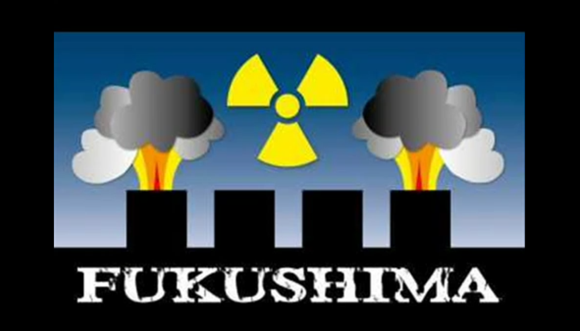
www.abovetopsecret.com...
www.abovetopsecret.com...
click stargate

Peace Love Light
tfw
[align=center][color=magenta]Liberty & Equality or Revolution[/align]

www.abovetopsecret.com...

Greetings my friend:
We need to keep the horror of this environmental warfare nuclear holocaust on the front page of we, the people's, minds and thoughts in a positive, pro-active way, so as to be a beacon of light in the dark night of a potential nuclear winter, as [color=Cyan]positive thoughts create positive reality.

We certainly do not need any more distractions to further pollute our understanding of manifesting reality. We lightworkers have much to do, and as usual, you are on the front line with your incisive observations.
We salute you and wish you complete safety Godspeed.
On our side of the hill, we have been keeping the Bat Signal lit since 3/11- [color=Chartreuse]Nukushima Day 1, contending that what prevails here in America is a well-organized camouflage, a criminal act, actually, orchestrated by the very same people to whom we entrusted the power to uphold the law, and - by extension, our values - and who are paid to protect US: we, the people.
That’s their damn, strike that, sworn duty!!
Ethics, integrity, responsibility, anyone?

The public health radiation-induced quandry in the United States evidenced by infant mortality rates skyrocketing, the contamination of all open water, agricultural land and the entire food chain, not to mention the broader economic and social implications, has neither been fully acknowledged nor addressed in a comprehensive and meaningful fashion by the very authorities we elected and pay mightily for... for what, pray tell?
This is an undeclared nuclear war perpetrated on the peoples of Earth by an uncaring conspiracy comprised of the JAPGOV/TEPCO, the EPA/FDA/USGOV and the MSM worldwide. We have dealt with war before, and we'll treat this attack on we, the people, as such and respond accordingly, albeit with 40 years more knowledge and ammunition plus newly-freed pent-up frustrations of feeling betrayed by those we trust... we do not forget.
America as a nation state is on the Eve of Destruction, teetering on the brink of a precipice that is surely a fatal fall if we were to plunge into the abyss. Our once-fertile, abundant lands and inland, once-pristine waters are now nuclear fallout contaminated - for how long, no one seems to be sure - hundreds, perhaps thousands of years. The balloon has dropped people, and it's called Nukushima.
Too many parts of our country are already uninhabitable forever, plagued by the broken promises of multiple lackey government agencies and nuclear-friendly-and-paid-for administrations that continued to kick the nuclear radioactive waste can down to road and these once-temporary on-site spent fuel pools and dry canister storage have now become the final resting place for this nightmare abomination that is radioactive - for all intents and purposes - FOREVER.

In this light, we are pleased to share a few non-radioactive nuggets to your fine effort.

These are some "fishing" Tweets:
Occupy+Anti-Nuclear Collective = Force to be reckoned with. TEPCO/JAPGOV blink
as radiation cover-up further exposed. DENY IGNORANCE
www.abovetopsecret.com...
RADIATION WATCH 2012+RadWaste in Kyrgyzstan+StarryBrooke intense Yokohama
anti-nuclear rally pics, Passion Personified...DENY IGNORANCE
www.abovetopsecret.com...
DENY IGNORANCE
Radiation Watch 2011:Cold shutdown NUKESPEAK, Yucca Mtn Boondoggle-Now What?
www.abovetopsecret.com...
Mutant' life' is not quality living in our book: What say you? DENY IGNORANCE
www.abovetopsecret.com...
All breadcrumbs dropped along the trail lead back to ATS... so, lead, follow,
or get out of the way!
[color=Cyan]Continue to give 'em hell, Muz... we've got your back.
www.abovetopsecret.com...

www.abovetopsecret.com...
www.abovetopsecret.com...
click stargate

Peace Love Light
tfw
[align=center][color=magenta]Liberty & Equality or Revolution[/align]

www.abovetopsecret.com...
edit on 27/1/2012 by thorfourwinds because: color
originally posted by: Blackmarketeer
Some additional stats if you want to compare US, EU and Japanese Nuke plants:
Most EU plants conform to ISO3XXX and bury their reactor cores to about 250M (minimum) depth.
In the US they're buried to about 200 - 400M, with the older ones less than that.
In Japan the minimum is 500M, and heavily reinforced. The Fukushima core was 800M beneath the surface.
oh..so the fuku cores were below ground?
a reply to: Silverlok
Greetings:
"800 meters beneath the surface" … new information to us.
Since there are 6 reactors at 'Fukushima', just which of these reactors are you speaking of, if you please?
To help you with your answer, does this eliminate these two?
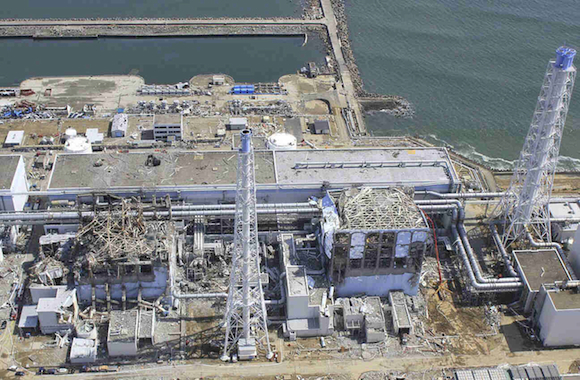
Thank you.
With great respect,
tfw
Peace Light Love

Greetings:
"800 meters beneath the surface" … new information to us.
Since there are 6 reactors at 'Fukushima', just which of these reactors are you speaking of, if you please?
To help you with your answer, does this eliminate these two?

Thank you.
With great respect,
tfw
Peace Light Love

edit on 25/8/2015 by thorfourwinds because:
lynx
edit on 25/8/2015 by thorfourwinds because: ttyyppooss
originally posted by: thorfourwinds
a reply to: Silverlok
Greetings:
"800 meters beneath the surface" … new information to us.
..(snip)
Thank you.
With great respect,
tfw
Peace Light Love
...new to anyone as all singularity skycastle fantasy's are, ...but in a sense the majority of core material may be that far underground by now .
My posting about obvious nonsense is just an interesting test to the kind and quality of response to the absolute misuse or complete lack of understanding of scientific process that seems to be applied time and time again in response to the fukushima daiichi disaster /the nuclear industry/ or anything related to that event/process)
I mean even if the reactors were below ground ( no scientific or actual evidence for that anywhere in existence) , how would that mitigate anything we have observed in the last four years ?
saying that the cores where below ground is so ...incredibly stupid I wanted to draw the poster out to see if there was more where that came from, as sometimes the enemy is ignorance, though mostly it is not .
new topics
-
Inca stone masonry at Sacsayhuaman, Ollantaytambo and the Sun Temple
Ancient & Lost Civilizations: 7 hours ago -
President-Elect TRUMP Picks Former Florida A.G. PAM BONDI to be U.S. Attorney General.
2024 Elections: 11 hours ago
top topics
-
President-Elect TRUMP Picks Former Florida A.G. PAM BONDI to be U.S. Attorney General.
2024 Elections: 11 hours ago, 13 flags -
Putin will warn civilians in targeted areas
World War Three: 14 hours ago, 11 flags -
The Popular Vote does not matter
Political Issues: 15 hours ago, 8 flags -
A Mysterious Orb filmed over NYC by local news
Aliens and UFOs: 13 hours ago, 7 flags -
Inca stone masonry at Sacsayhuaman, Ollantaytambo and the Sun Temple
Ancient & Lost Civilizations: 7 hours ago, 3 flags
active topics
-
All Talk No Walk Celebrities Blowing Smoke
US Political Madness • 58 • : SideEyeEverything1 -
Well we know Putins ICBMs won't fail in their silos
World War Three • 125 • : andy06shake -
President-Elect TRUMP Picks Former Florida A.G. PAM BONDI to be U.S. Attorney General.
2024 Elections • 27 • : SideEyeEverything1 -
The Popular Vote does not matter
Political Issues • 13 • : YourFaceAgain -
President-Elect DONALD TRUMP's 2nd-Term Administration Takes Shape.
Political Ideology • 228 • : YourFaceAgain -
Democrat county officials openly declare intention to commit ballot fraud in PA
2024 Elections • 24 • : YourFaceAgain -
The Reactionary Conspiracy 6. Modus Operandi II
General Conspiracies • 136 • : MarxistDebunker2 -
A Mysterious Orb filmed over NYC by local news
Aliens and UFOs • 10 • : Encia22 -
Inca stone masonry at Sacsayhuaman, Ollantaytambo and the Sun Temple
Ancient & Lost Civilizations • 2 • : AdmireTheDistance -
Putin will warn civilians in targeted areas
World War Three • 34 • : andy06shake

